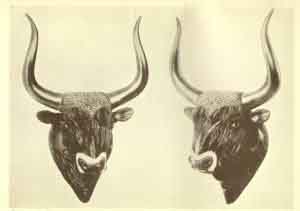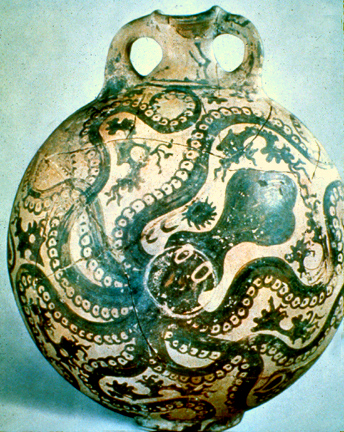
Bryan first learned of the Minoans when he was 11 years old.
A relative had given him a stack of National Geographic Magazines because they knew he was interested in history. He searched through them to find the oldest one,which was from January of 1912. As he read an article called “The Sea-Kings of Crete,” Bryan found himself encountering a distant culture that ignited a life-long fascination.

A rhyton in the shape of a bulls head, a spiral-filled ceiling made of symbols he had been drawing for as long as he could remember, the shape of tapered columns, and so much more seemed both foreign and deeply familiar to him at the same time. By the time he closed the magazine, the way life appeared to him had been changed. Though he was unable to learn more at the time, he kept the memory of how he felt when he looked at the Minoan art with him as he moved through life.

While studying Art History in college, he once again found himself turning a page and finding the same bulls-head rhyton with its golden horns looking back at him.
Over a decade had passed, but the calm gaze of the stone bull had lost none of its power to reach him. This time it was accompanied by page after page of color illustrations of bull-leapers, priestesses holding offerings, ceramics covered with lavish paintings of sea-life, and delicate golden metalwork. It was a visual explosion of good feeling that he returned to over and over again.

In 2015 he encountered the same feeling of unmitigated joy as he came upon a larnax in the Metropolitan Museum during a brief break on a business trip to New York City. Once again, he found the spiral shapes he had been drawing for most of his life. This time they were painted in red up the outside of a ceramic artifact that had once held the bones of several generations of Minoans. As he circumnavigated the object there in the museum, he began the journey that would send him out to learn if there was anyone else as interested in these ancient people as he was. As it turned out, there was. Now he is happy to be a member of the Ariadne’s Tribe community.
You must be logged in to post a comment.